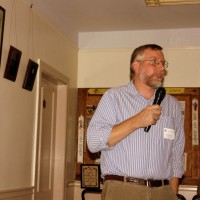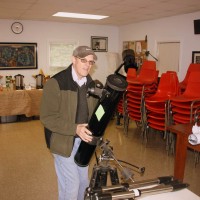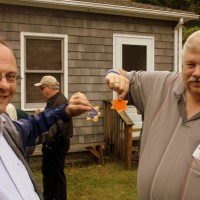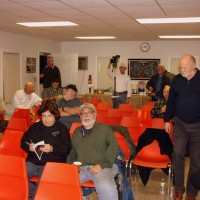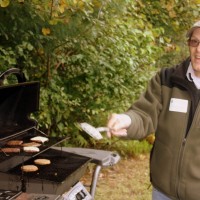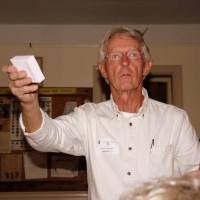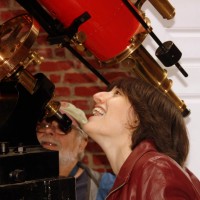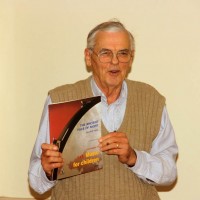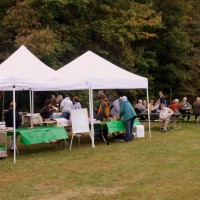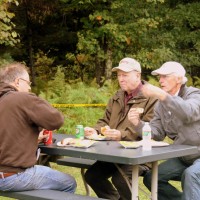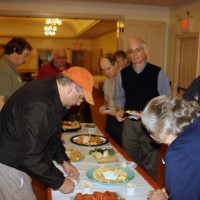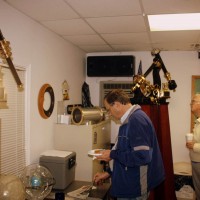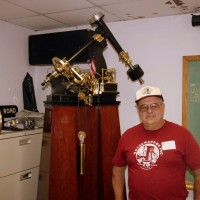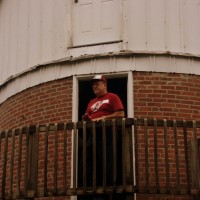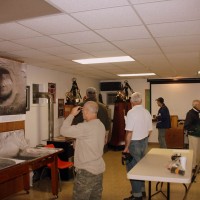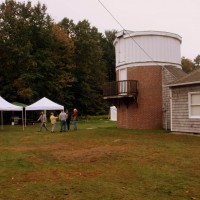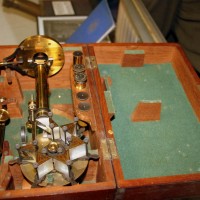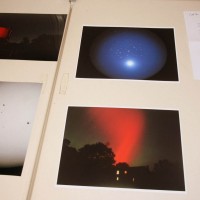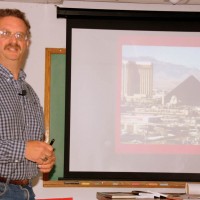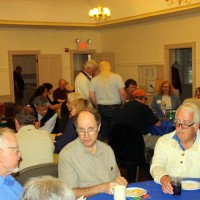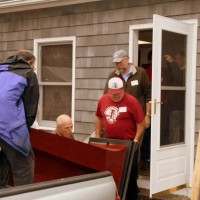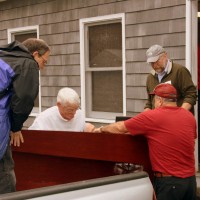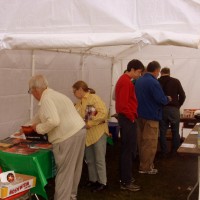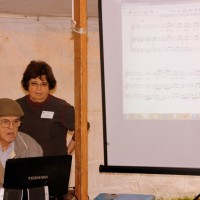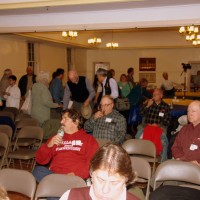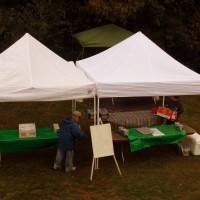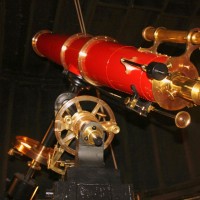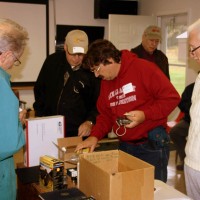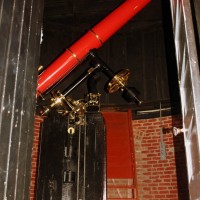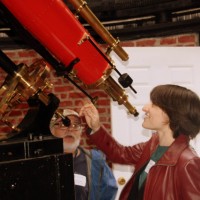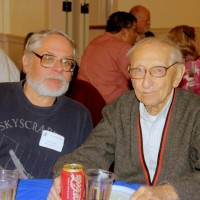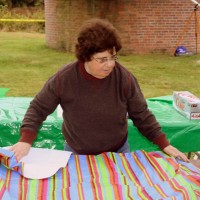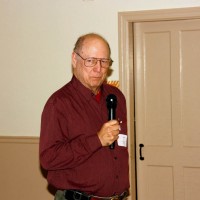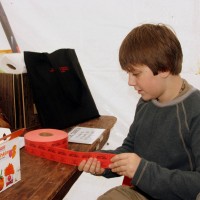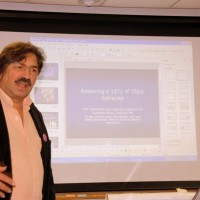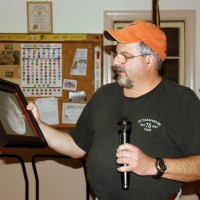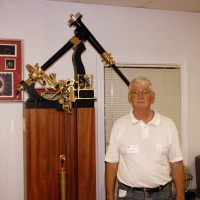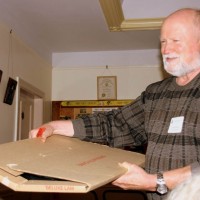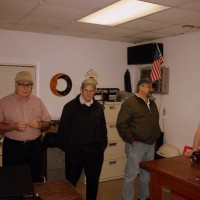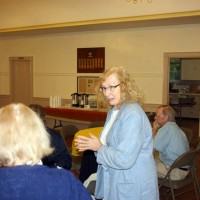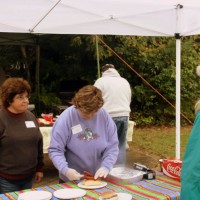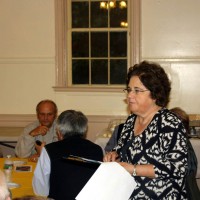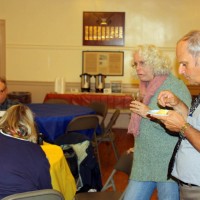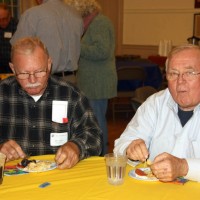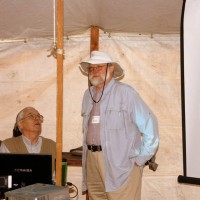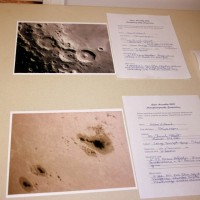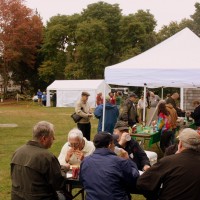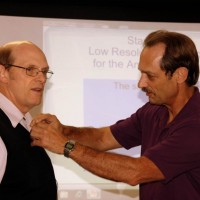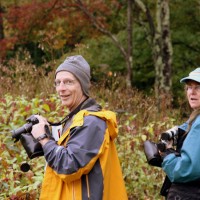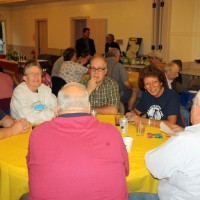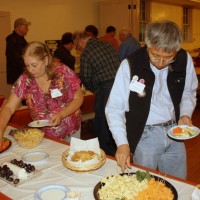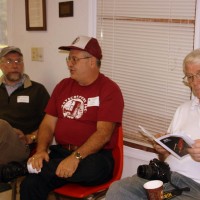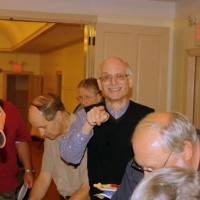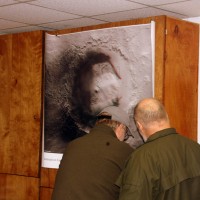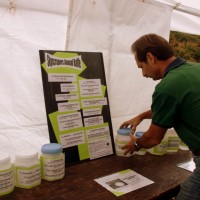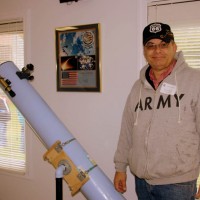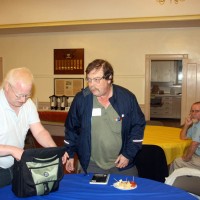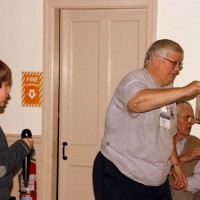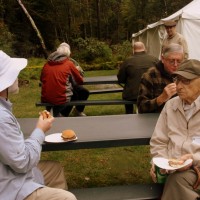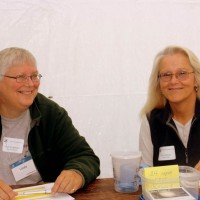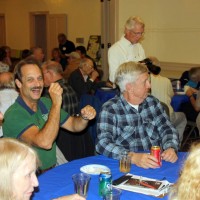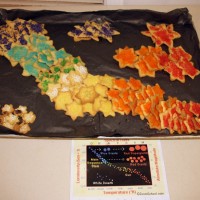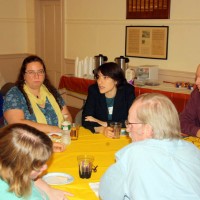AstroAssembly 2012
More than a week has passed since our 60th AstroAssembly, our annual event that brings together amateurs from all over New England to reconnect with old friends, learn something new and just have a great time. While the weather forecast predicted clouds and rain, the showers never dampened our spirits as more than 80 people turned up at Seagrave for a wonderful day and two evenings.
Despite the pouring rain on Friday night , 25 people showed up to hear excellent talks from three amateur astronomers: Conrad Cardano describing his success experimenting with low resolution spectroscopy, Steve Hubbard sharing his trip to Mt. Wilson Observatory and Tony Costanzo showing us how he restored an 1871 Alvan Clark Refractor that was almost discarded at an old school.
The theme this year was “Citizen Science”, non specialists helping the professionals to make observations and carry on investigations of scientific projects. We were able to interest some excellent speakers to explore this topic. Three young female astronomers working at different Universities on the East Coast shared their passion for science and their important work unraveling the mysteries of the universe. Dr. Carie Cardamone, of Brown University who was also instrumental in helping to obtain the other speakers, gave an overview about the many projects that have evolved in Citizen Science from the original Zooinverse and gave details about the discoveries of citizens in “Green Pea Galaxies”. (See the information about various projects included in this newsletter.) Dr. Meg Schwamb, from the Yale Center for Astronomy and Astrophysics, described her work with “Planet Hunters”. The main speaker at our evening program was Dr. Bethany Cobb Kung, of George Washington University, who described her work with Gamma Ray Bursts, Supernovae and Cataclysmic Variables. Skyscraper Gerry Dyck shared his research into Frank Seagrave’s work on variable star observations. Gerry also created an inspiring presentation of his original music derived from the light curve of SS Cygni (and other variable stars) accompanied by his original poetry, called “The Ancient Face of Night” prior to the evening program. We had planned an early afternoon presentation by long-time member, Ed Turco, describing the equipment used by amateurs in 1961. Unfortunately Ed became ill on Friday and could not attend this year. He was missed by all. A thank you to Gerry, who was kind enough to provide a multimedia presentation at the last minute.
This year’s AstroAssembly also included a couple of ‘old time’ competitions – the astrobakeoff and the astrophoto contest. These were quite a success. Julie Kaufman of ATMoB created a very delicious and creative rendition of the HR Diagram with star cookies and then personally served them to all of us. Winners of the Astrophoto contest included: John Kocur, Bill Gucfa and Steve Hubbard, who produced excellent views of the sky. Our annual raffle also proved quite popular and the winners enjoyed all their prizes. Contributors included: Astronomy Shoppe (Tony Costanzo), Televue Optics, Orion Telescopes and Binoculars, Skyhound Software, Oceanside Photo and Telescope, Cotton Expressions, Edmund Scientific and Ken Dore of Skyscrapers.
While I coordinated this event, it was successful because of the help of many volunteers who worked with me behind the scenes to make everything seamless. I always hesitate to mention names, since it is so easy to forget one or two individuals. However, I will try to include all who helped. My thanks to: Tom Barbish, Pam Beck, Linda and Alex Bergemann, Jim Brenek, Conrad Cardano, Jim Crawford and his son, Bob Forgiel, Ed Haskell, Bob Horton, Steve and Sue Hubbard, Dave and Tina Huestis, Ray Kenison, Pat Landers, John Leonelli, Lloyd Merrill, Charlie Moszczenski, Steve Siok, Tom Thibault, Scott Tracy, Special thanks to Jim Hendrickson, who set up our beautiful program, and to non-Skyscrapers, Dave Kelly and his son, who helped because they feel so at home at AstroAssembly. If I left anyone out of this list, please accept my sincere thanks and understanding. Thank you to all!
AstroAssembly occurs on two dates, Friday evening and all day Saturday. This article is a report on the presentations made Friday evening. My purpose in writing is ostensibly to preserve a record of what happened that evening. More to the point, however, it is to ensure that members who stayed away from the convention know how much they missed by their absence.
Conrad Cardano: Star Analyzer: Low Resolution Spectroscopy
Conrad began with an explanation of spectroscopy, the study of the interaction between matter and radiated energy, i.e, light. There followed an illustration of the electromagnetic spectrum identifying the tiny part occupied by visible light. Then was covered the types of spectra, continuous, absorption and emission, the latter two of which may contain lines which are characteristic of the various chemical elements present in the source of the spectra.
These concepts were demonstrated by the use of a Ronchi grating which was then elucidated further to show how modern astronomical spectroscopes, including the Star Analyzer, spread the light from a single star into a spectrum. Research grade spectrometers are quite expensive while the Star Analyzer trades off some of the more esoteric functions against cost to produce a device that meets most of the needs of amateur astronomy at a manageable price.
In addition to the spectroscope several other devices are needed. A digital camera of the sort many of us already own and a fairly typical telescope such as a Celestron C5 provide a good platform to support the Star Analyzer. With this setup, useful results may be obtained with exposures in the range of four to ten seconds.
As you might imagine, software to process the output of the Star Analyzer is a requirement which is met by the Sky & Telescope Hot Product for 2011 know as RSPEC. More information on RSPEC is available at http://www.rspec-astro.com/.
Conrad showed several analysis runs which made it obvious that the use of both the hardware and software were within the ability of amateurs of average ability. After the scope is polar aligned it is easy to do a half a dozen exposures within the hour.
There followed a comprehensive presentation of the ways one uses the information provided by this hardware/software combination. Sadly it is beyond the scope of a short article to go into these matters but they are of considerable interest and Conrad covered them with all of the aplomb we have come to expect from the better professional presentations at our regular meetings. I urge you to borrow the video of this presentation made by Jim Crawford if you are interested in furthering your understanding of this topic.
Steve Hubbard: Bigger Really Can Be Better: Visit to Mount Wilson Observatory
Steve reported on a visit to Mount Wilson which a group of amateurs took to that location as well as Mount Palomar and the Griffith Observatory last spring in a tour arranged by Dan Lorraine. Unlike most trips this one featured two all night observing sessions using the famed 60” telescope on which Edwin Hubble did most of his work leading to the theory of the expanding universe.
Many photographs of Mount Wilson and its environs were taken by Steve and others and illuminated effectively the verbal report in such a manner that listeners were able to feel the same excitement experienced by those on the trip.
Mount Wilson Observatories include a number of instruments in addition to the 60”: the 100” Hooker Telescope, the Snow Solar Telescope and several other solar instruments, etc. Both the 60” and the 100” were at one time the largest telescopes in the world.
Tony Costanzo: Restoring an 1871 4” Clark Refractor
Tony reported on his delight at locating a derelict 4” Clark refractor and the work required to restore it to its original splendor. Along the way he also made side trips to two other telescopes his shop restored this year, a 4” Photo Equatorial Unitron and a 1967 Celestron C-10.
The Clark was located at the Punchard School in Andover MA, where it was stored under the kitchen. As might be expected the instrument had a lot of water damage and was being thrown away. A science teacher rescued it and Tony bought the instrument. Fortunately the focuser, the finder, and the lens cell had been stored elsewhere and were in almost pristine condition. The rest of the instrument looked like a hundred and forty years of hard use. The tripod and case were covered by green mold and the optical tube assembly was heavily tarnished.
Tony covered in detail how he removes mold, mildew, tarnish, etc., and many members of the audience were seen to be furiously scribbling notes in the dark. Fortunately the optics were in quite good condition so none of these substances were required for the glass elements. The OTA needed more than eight hours of cleaning and polishing, and the tripod considerably more effort before being finished off with bowling alley wax.
After a detailed discussion of the processes involved in the restoration Tony went on to mention briefly how he had reworked the Celestron C-10 f/13 which had been in a yard sale for 100 dollars. The only trouble of consequence was with the mechanism used for focusing; a triangular device for moving the mirror forward and back to accomplish focus.
He then went on to discuss the 4” Unitron refractor and mechanical clock drive. The instrument had been left out in the rain and all the metal surfaces were a dingy grey and the mount was frozen. After cleaning and polishing the metal surfaces the telescope was fine.
These three member presentations exemplify how really good an amateur presentation can be if the story is interesting and modern presentation technology is used to good advantage.



